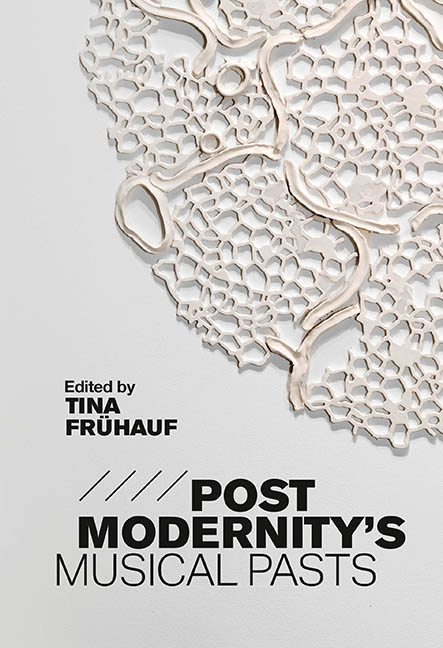Book contents
- Frontmatter
- Dedication
- Contents
- List of Illustrations
- List of Music Examples
- List of Contributors
- Acknowledgments
- About the Cover
- Introduction
- Part I Time and the (Post)Modern
- Part II Manifestations of History
- Part III Receptions of the Past
- Part IV Nostalgias and the Temporalities of Belonging
- Bibliography
- Index
1 - Music and Postmodern Time
Published online by Cambridge University Press: 28 April 2020
- Frontmatter
- Dedication
- Contents
- List of Illustrations
- List of Music Examples
- List of Contributors
- Acknowledgments
- About the Cover
- Introduction
- Part I Time and the (Post)Modern
- Part II Manifestations of History
- Part III Receptions of the Past
- Part IV Nostalgias and the Temporalities of Belonging
- Bibliography
- Index
Summary
The term ‘postmodernism’ hovers between two usages, one referring to an aesthetic of pastiche and self-conscious eclecticism, the other to a conceptual orientation averse to what Jean-François Lyotard famously called grand narratives. The two are linked, however, by their non-hierarchical character and by their disregard for chronological or generic boundaries. The relevant traits are familiar, even clichéd: an emphasis on surface rather than depth, a preference for juxtaposition at the expense of expository or narrative continuity, a penchant for quotation and for the recycling of cultural material. These traits typically combine with each other while remaining detached from the imperatives of a central point of reference or controlling consciousness. It is the detachment that most distinctly uncouples the ‘post’ from the ‘modern’, although the difference is not always clear or, for that matter, real. Similarly, it is an affirmative, anxiety-free, or playful attitude toward that detachment that typifies a ‘postmodernist’ style in the art worlds of the late twentieth century. Otherwise the traits I have just listed as familiarly postmodernist are equally typical of much art throughout history, though perhaps most emphatically so since 1900. It is important to state at the outset that my concern in this essay is neither with postmodernism as an aesthetic trend nor with postmodernist styles of art or music but with the general epistemic condition of the postmode rn, which is independent of the aesthetic orientations that share part of its name. My topic is not postmodern times but the ti me of the postmodern and its range of relationships to music.
In order to inquire about the time of the postmodern, if there is such a (single) thing, we need to situate the postmodern itself in time. As many observers have noted, the category is not chronological, although, one might add, it became possible only at a certain late point in the history of the modern, along with a certain conception of postmodern knowledge. Understanding the postmodern is in that respect a retrospective enterprise, even when it is most closely attuned to the present. Understanding the postmodern is a postmodern project.
How then is the phenomenon to be understood? The postmodern is a latent condition within the modern itself.
- Type
- Chapter
- Information
- Postmodernity's Musical Pasts , pp. 17 - 36Publisher: Boydell & BrewerPrint publication year: 2020



